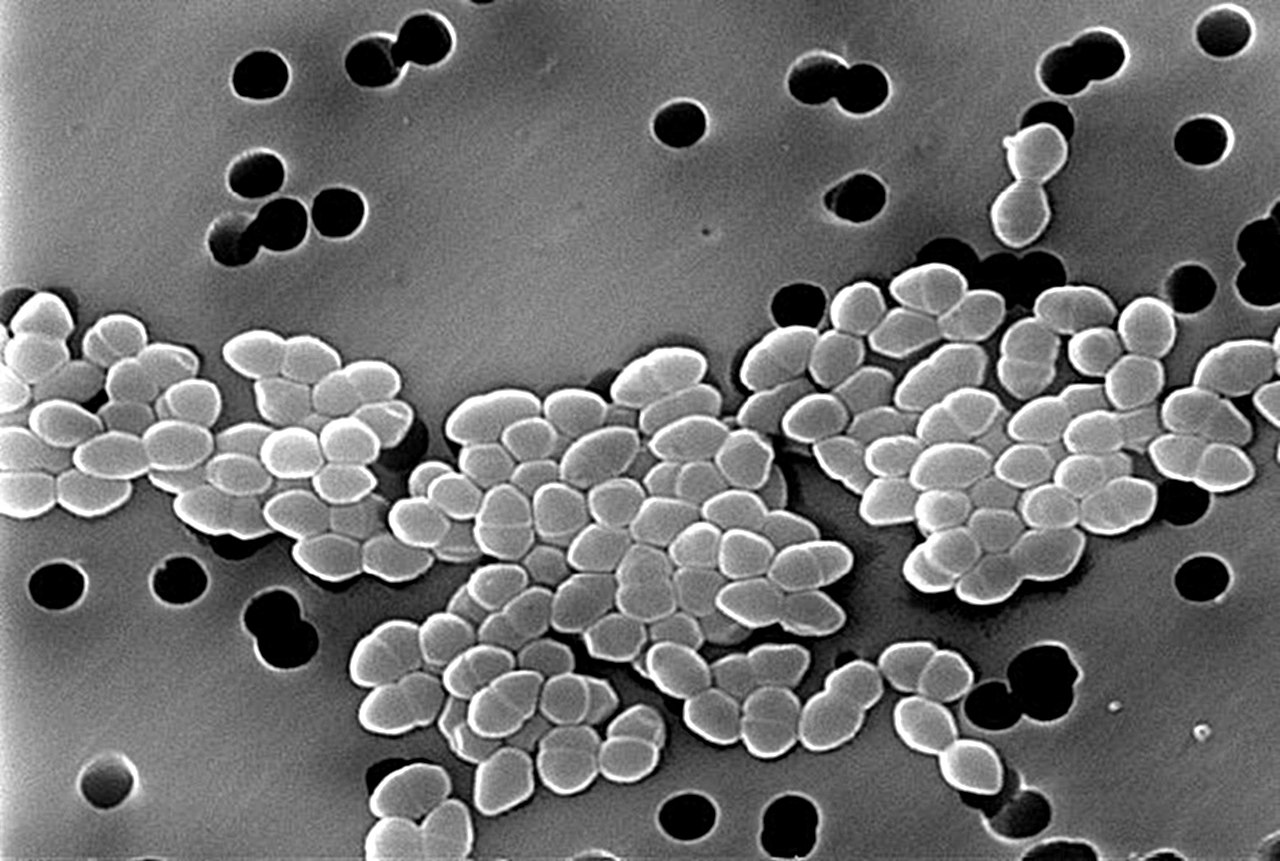For decades the methicillin-resistant bacteria Staphylococcus aureus (MRSA) could be successfully treated with vancomycin. As a glycopeptide, vancomycin belongs to a different class of antibiotic than methicillin. However, there are issues with vancomycin as well, including side effects caused by high doses. Without appropriate treatment, MRSA infections can be lethal and are estimated to cause more than 100,000 deaths per year, according to a study in The Lancet. Of growing concern is the finding that some MRSA strains as well as other Gram-positive bacteria have also developed resistance against vancomycin.
Efforts to develop alternatives include modifying vancomycin in a number of ways, for example with a lipid tail (lipoglycopeptides), but the resulting antibiotics were often toxic or suffer from poor solubility which is a problem for an injectable. Nathaniel Martin at the Institute of Biology of Leiden University had the bright idea to introduce a guanidine unit with a lipid tail onto the vancomycin core.
These guanidino lipoglycopeptides have two advantages over vancomycin itself, explains Elma Mons who has been involved in the study in Martin's group for the last three years. "The guanidine moiety carries a positive charge in the body. This causes the antibiotic to bind much better to the negatively charged bacterial membrane and improves its solubility in water. The lipid tail also improves anchoring of the antibiotic in the bacterial membrane. These factors together enhance the antibiotic’s binding to lipid II, a precursor of the bacterial cell wall. Binding to lipid II inhibits cell wall biosynthesis, effectively killing the bacteria."
Well behaved compound
A variant with a tail containing seven carbon atoms, called EVG7 (after Emma van Groesen, the former PhD candidate who designed the original panel of compounds) proved to be the most promsing candidate. Numerous studies on the effectivity and toxicity of EVG7 have been positive, describes Mons. "The compound behaves better than any other I've worked with." EVG7 was proven effective against bacteria at a 100- to 1000-fold lower dose than vancomycin. An in vivo sepsis study showed that after 7 days all mice survived an infection with MRSA when treated with EVG7. In contrast, among the group treated with the same dose of vancomycin, all but one of the mice died. In cell-based toxicity studies, EVG7 showed no cytotoxicity or mutagenicity. In vivo renal toxicity studies further showed that at a therapeutically relevant dose, EVG7 caused no adverse effect on the kidneys in contrast to vancomycin.
On the way to a new antibiotic
Mons says: "An important next step are biodistribution studies, in which we investigate where the compound ends up in the body after injection. This is exciting but also critical: the antibiotic needs to get to the affected organs, for example skin or other organs in case of an infection after surgery." In addition, the production of the compound needs to be scaled up for larger studies, which Mons is working on. A patent was recently granted on the compound and the method of its synthesis. The researchers are now investigating the possibility for a start-up company which will take on the clinical studies. In a best case scenario, EVG7 could be a new antibiotic on the market in about ten years.
"Semisynthetic guanidino lipoglycopeptides with potent in vitro and in vivo antibacterial activity" E. van Groesen et al., Science Translational Medicine 7 Aug 2024, Vol 16, Issue 759.
